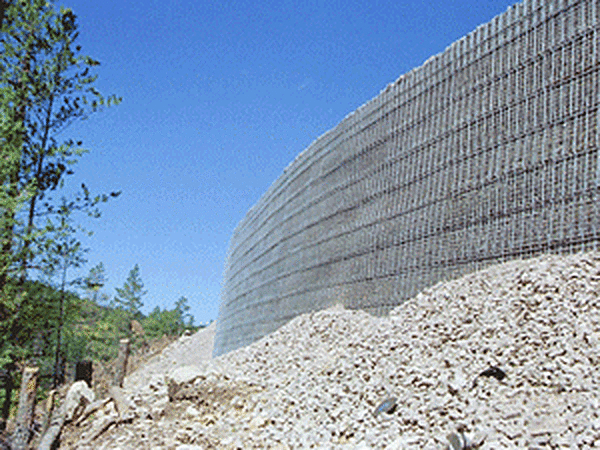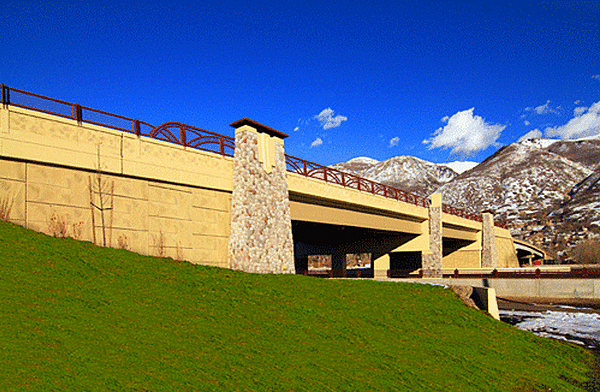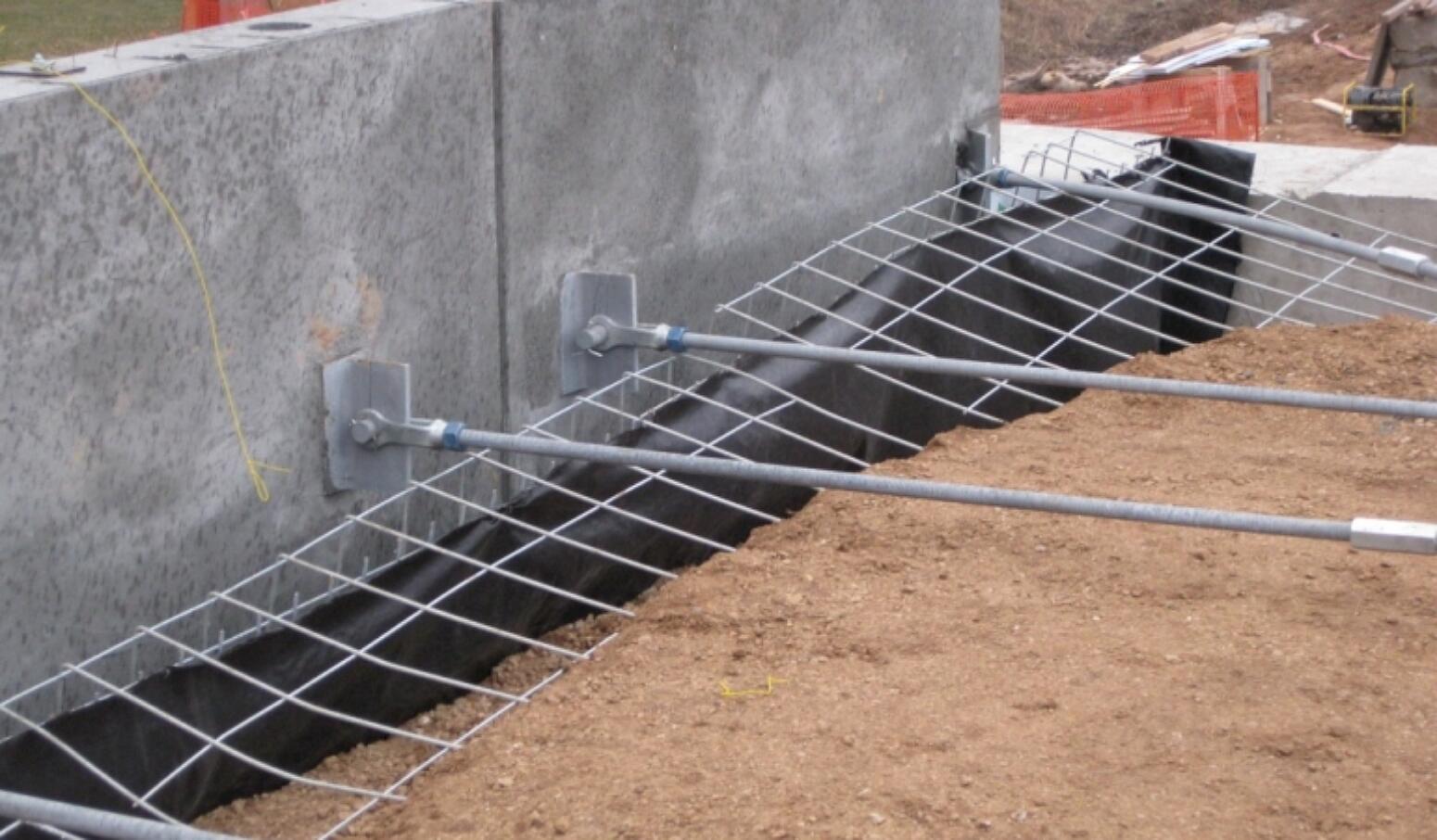Mechanically Stabilized Earth

Mechanically stabilized earth (MSE) is a structural system used throughout our infrastructure for earth retention and load support. MSE systems are utilized to meet a variety of infrastructure needs, including highway retaining walls, bridge abutments, ramps, and overpasses as well as structures for railroads, mass transit, airports, and commercial and industrial facilities.
Mechanically stabilized earth structures typically have three main elements:
- Facing: The vertical façade or wall element; most commonly constructed of interlocking precast concrete panels with standard or custom-designed architectural finishes. In addition to its architectural features, facing prevents localized erosion and has embedded connectors for attaching the reinforcements.
- Reinforcements: These extend from the facing into the backfill for a distance related to wall height and structural loading, but at least 70% of the wall height. The reinforcements are flat, ribbed steel strips, welded wire mats, or bar mats, typically hot-dip galvanized after fabrication. Friction between reinforcements and backfill binds everything into a strong stable mass.
- Backfill: The soil which forms the bulk of the MSE structure. Its properties are specified not only to provide strength, but also to minimize corrosion of the reinforcements. Backfill is placed in lifts, alternating with facing panels and reinforcements, until the structure's required height is reached.
Hot-dip galvanized steel is the material most commonly used for MSE reinforcements, and occasionally galvanized steel wire mesh is used for facing in both temporary and permanent applications. There is potential for galvanized steel to be used in other facing types; however, aesthetic preference is a big limitation. Hot-dip galvanized steel provides a number of benefits to mechanically stabilized earth systems because of its durability and long life when buried in soil.

Galvanized steel has been utilized for generations because of its longevity in varied environments, including embedded in soil. The backfill soil utilized in MSE is specified to control pH and resistivity, as well as to limit chloride and sulfate content. These limits reduce the soil's corrosivity to the galvanized reinforcements. Therefore, when embedded in specified soil types, galvanized steel provides maintenance-free longevity uniquely suited to the typical 75-100 year design life of MSE structures.
Chloride content is a soil characteristic with one of the most profound effects on galvanized steel's performance; therefore, controlling this variable significantly increases the longevity of galvanized steel reinforcement in MSE systems. Another characteristic that plays an integral role in the performance of galvanized steel in soil is moisture content, in conjunction with backfill resistivity. Studies indicate, and the AGA's Soil Chart shows, soils with higher moisture content are more corrosive than those with less moisture. Moisture, and the corrosive elements such as road salts it sometimes carries, can penetrate the soil and reach the reinforcements. Utilizing best practices for drainage control and for MSE design and construction minimizes the amount of moisture introduced into the soil. Thus, the use of galvanized steel for MSE steel reinforcements, even in moist soils, will extend the service life of the structure.
Mechanically Stabilized Earth Case Study
US 41 Retaining Wall- Fox Valley, WI; 2011

Logistics and material handling were key to the success of the US 41 Retaining Wall project. The wall design called for long wire wall panels. As you can expect, long panels such as these are difficult to handle and subject to bending. On top of that, the panels and backing mats needed to be choreographed to reach the job site in precise order; construction crews do not wait for anyone and any delay or mis-shipment can bring a project to a halt causing enormous back charges. The turn around times provided by the HDG process were critical. Close communication between the designer, fabricator, truck lines and galvanizer was necessary to accomplish the effective execution of the plan.
Similar to HDG steel rebar, HDG welded wire for retaining walls proves the economic value to the tax payer. As our infrastructure shows rapid decay, the taxpayers want longer solutions with no environmental impact. HDG is a perfect fit. Projects such as this one are perfect examples of the cost effective, flexible, environmentally safe benefits of HDG.
